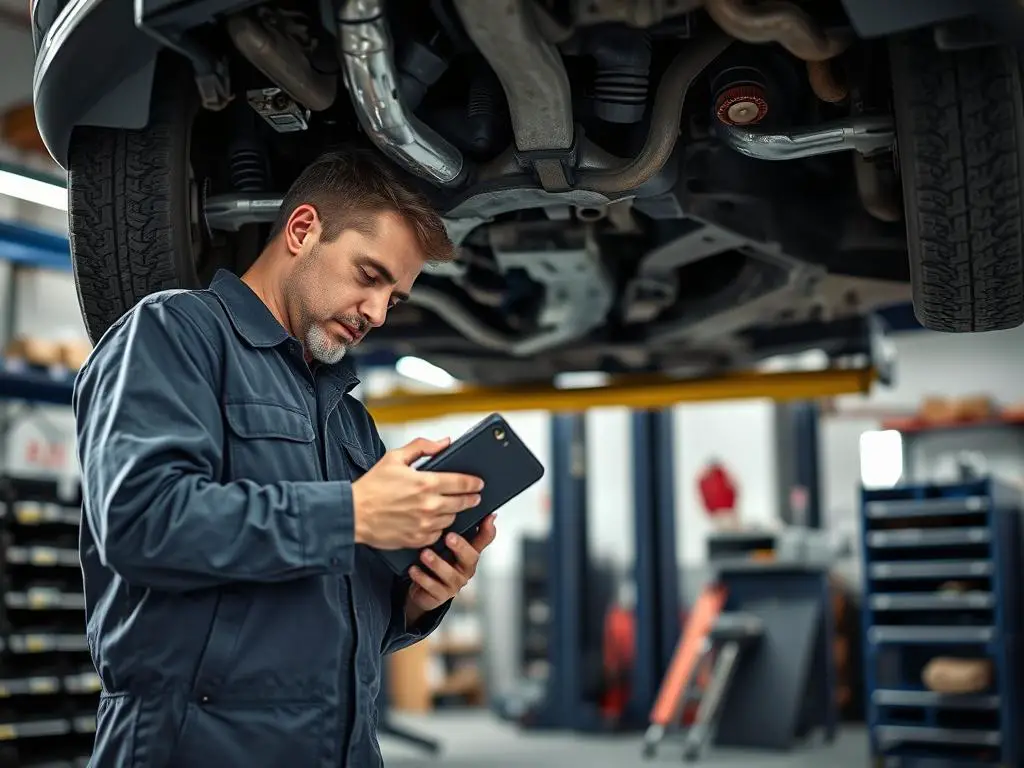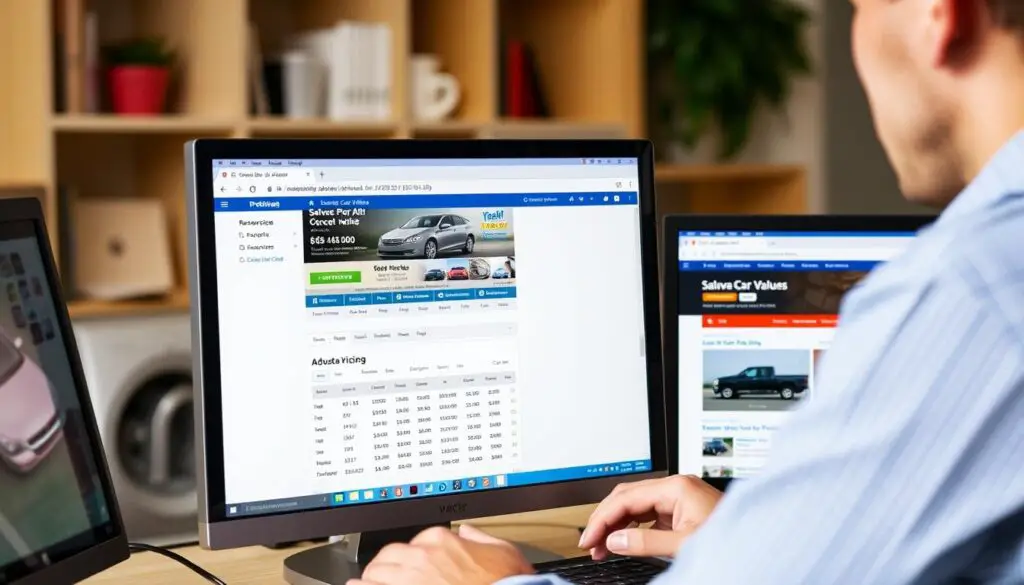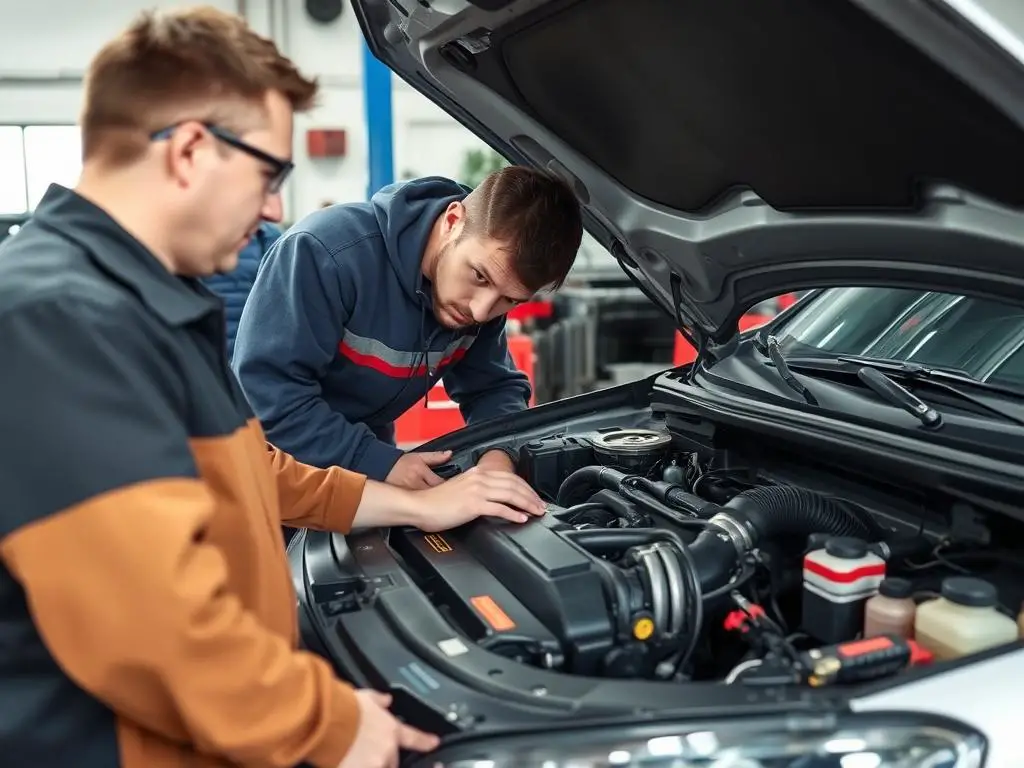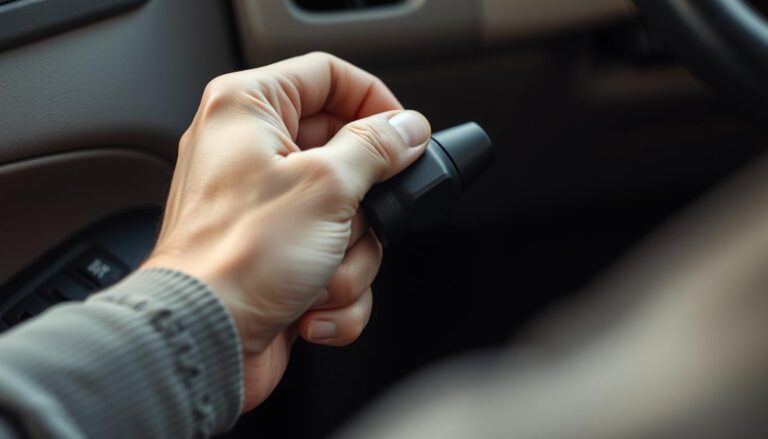Selling a car with a salvage title presents unique challenges, but with the right approach, you can still find buyers and get a fair price. This comprehensive guide walks you through everything you need to know about salvage titles, how to prepare your vehicle for sale, where to find potential buyers, and how to navigate the selling process successfully. Whether your car has been in an accident, damaged by flood, or recovered after theft, we’ll help you understand your options and maximize your selling potential.
Understanding What a Salvage Title Means
A salvage title is a designation given to a vehicle that an insurance company has declared a “total loss.” This typically happens when a car has been damaged to the extent that repair costs would exceed a certain percentage of the car’s pre-damage value—usually between 75% and 90%, depending on state regulations.
While a salvage title doesn’t necessarily mean the car is beyond repair, it does indicate that the vehicle has experienced significant damage. This designation permanently affects the car’s value and how potential buyers perceive it.
Common Reasons a Car Receives a Salvage Title
- Major Accidents: Severe collision damage that compromises the vehicle’s structural integrity or would be extremely costly to repair.
- Flood Damage: Water intrusion can cause extensive damage to a vehicle’s electrical systems and interior components, often leading to a salvage designation.
- Fire Damage: Even minor fires can cause significant damage to a vehicle’s wiring, interior, and structural components.
- Theft Recovery: If a stolen vehicle is recovered after the insurance company has already paid out a claim, it may receive a salvage title.
- Hail Damage: Severe hail storms can cause extensive cosmetic damage that may exceed the vehicle’s value to repair.
Salvage Title vs. Rebuilt Title: Understanding the Difference
| Characteristic | Salvage Title | Rebuilt Title |
| Legal Status | Cannot be legally driven on public roads | Can be legally driven after passing inspection |
| Repair Status | Vehicle has not been repaired after damage | Vehicle has been repaired and inspected |
| Insurance | Typically cannot be insured | Can be insured, though often with limitations |
| Registration | Cannot be registered for road use | Can be registered after passing state inspection |
| Market Value | Significantly lower (30-70% less than clean title) | Lower than clean title, but higher than salvage |
Understanding the distinction between a salvage title and a rebuilt title is crucial when selling your vehicle. A rebuilt title indicates that a salvage vehicle has been repaired and has passed a state inspection to verify its roadworthiness. While a rebuilt title still affects a vehicle’s value, it can make the car more marketable since it can be legally driven.
Challenges of Selling a Car with a Salvage Title

Before diving into the selling process, it’s important to understand the specific challenges you’ll face when selling a car with a salvage title. Being prepared for these obstacles will help you develop a more effective selling strategy.
Challenges When Selling a Salvage Title Car
- Significantly Lower Market Value: Expect your car to sell for 30-70% less than the same model with a clean title, even if it’s in excellent condition.
- Limited Buyer Pool: Many potential buyers avoid salvage title vehicles due to concerns about safety, reliability, and future resale value.
- Financing Difficulties: Most lenders are reluctant or unwilling to finance salvage title vehicles, limiting your potential buyers to those who can pay cash.
- Insurance Obstacles: Buyers may struggle to find comprehensive insurance coverage for salvage title vehicles, making them less attractive purchases.
- Trust Issues: Buyers may be skeptical about the true condition of the vehicle and the quality of any repairs performed.
The Impact on Your Car’s Value
A salvage title typically reduces a vehicle’s value by 30-70% compared to the same vehicle with a clean title. This significant reduction occurs regardless of the vehicle’s actual condition or the extent of repairs. For example, a car worth $10,000 with a clean title might only fetch $3,000-$7,000 with a salvage title, even if it’s been perfectly repaired.
Buyer Concerns You’ll Need to Address
- Safety Concerns: Buyers worry that salvage vehicles may have hidden structural damage that could compromise safety.
- Reliability Issues: There’s often concern about long-term reliability and the potential for recurring problems related to the original damage.
- Insurance Challenges: Many buyers are aware that insuring a salvage title vehicle can be difficult and more expensive.
- Future Resale Value: Buyers know they’ll face the same challenges when they eventually want to sell the vehicle.
- Unknown History: Without detailed documentation, buyers may be uncertain about the full extent of the previous damage.
Preparing Your Salvage Title Car for Sale

Proper preparation is crucial when selling a salvage title car. Taking the time to gather documentation, address cosmetic issues, and present your vehicle in the best possible light can significantly impact your ability to find a buyer and negotiate a fair price.
Essential Documentation Checklist
- Salvage Title Certificate: Have the actual salvage title document ready to show potential buyers. Make sure it’s current and in your name.
- Damage and Repair Records: Collect all documentation related to the original damage and any subsequent repairs. This includes insurance claim documents, repair invoices, and parts receipts.
- Before and After Photos: If available, gather photos showing the vehicle before repairs, during the repair process, and after completion. These help build trust with potential buyers.
- Vehicle History Report: Purchase a report from services like Carfax or AutoCheck to provide buyers with a comprehensive history of the vehicle.
- Maintenance Records: Include documentation of regular maintenance performed since the repairs to demonstrate the vehicle’s reliability.
- Inspection Reports: If you’ve had the vehicle inspected by a mechanic post-repair, include these reports to verify its current condition.
Making Your Vehicle Presentable
First impressions matter, especially when selling a car with a salvage title. Taking steps to make your vehicle look its best can help overcome buyer hesitation:
Exterior Preparation
- Thoroughly wash and wax the exterior
- Clean the wheels and tires
- Touch up minor paint scratches if possible
- Replace or repair broken lights
- Fix windshield chips or cracks
- Ensure all doors, hood, and trunk open and close properly
Interior Preparation
- Deep clean all interior surfaces
- Remove stains from upholstery
- Eliminate any odors
- Fix or replace torn upholstery if feasible
- Ensure all controls and features work properly
- Remove personal items and declutter
The Value of a Professional Inspection

Having your salvage title car inspected by a qualified mechanic before listing it for sale offers several advantages:
- Builds Buyer Confidence: A third-party inspection report helps assure potential buyers that the vehicle is in the condition you claim.
- Identifies Issues to Address: The inspection may reveal minor problems you can fix before listing, potentially increasing the vehicle’s value.
- Provides Negotiation Leverage: Having documentation of the vehicle’s current condition can help counter lowball offers.
- Reduces Liability Concerns: A professional inspection demonstrates your due diligence in ensuring the vehicle is safe and roadworthy.
Pro Tip: Ask the mechanic to provide a detailed written report specifically addressing any concerns related to the original damage. This can be particularly valuable for addressing buyer concerns about structural integrity or safety.
Determining the Right Price for Your Salvage Title Car

Pricing a salvage title car appropriately is crucial for attracting buyers while still getting a fair value. Setting the price too high will deter potential buyers, while pricing too low means leaving money on the table. Here’s how to determine a realistic asking price:
Understanding Salvage Title Value Reduction
As a general rule, a salvage title reduces a vehicle’s value by approximately 30-70% compared to the same vehicle with a clean title. The exact percentage depends on several factors:
- Extent of Original Damage: More severe damage typically results in a greater value reduction, even after repairs.
- Quality of Repairs: Professional, documented repairs may help retain more value than DIY or budget repairs.
- Vehicle Age and Model: Newer, more desirable models may retain more of their value despite a salvage title.
- Market Demand: Vehicles with high demand in your area may sell for a higher percentage of their clean-title value.
- Title Status: A rebuilt title (if you’ve had the vehicle repaired and inspected) will typically command a higher price than a straight salvage title.
Step-by-Step Pricing Method
- Determine Clean Title Value: Use resources like Kelley Blue Book, NADA Guides, or Edmunds to find the private party value of your vehicle assuming it had a clean title. Be honest about the vehicle’s condition, mileage, and features.
- Apply the Salvage Discount: Reduce the clean title value by 40-60% as a starting point. If your vehicle has been properly repaired and has a rebuilt title, you might use a smaller discount (30-50%). If it still has a salvage title and hasn’t been repaired, a larger discount (50-70%) is appropriate.
- Research Comparable Listings: Search online marketplaces for similar vehicles with salvage or rebuilt titles. Pay attention to asking prices and how long listings have been active to gauge market response.
- Consider Your Timeline: If you need to sell quickly, price toward the lower end of your range. If you can wait for the right buyer, you might start at the higher end.
- Factor in Room for Negotiation: Most buyers will expect to negotiate, so consider setting your asking price 5-10% higher than your minimum acceptable price.
Sample Pricing Calculation
| Calculation Step | Example: 2015 Honda Accord |
| Clean Title Private Party Value | $12,000 |
| Salvage Title Discount (50%) | -$6,000 |
| Base Salvage Value | $6,000 |
| Adjustment for Quality Repairs (+10%) | +$600 |
| Adjustment for Market Demand (-5%) | -$300 |
| Calculated Fair Value | $6,300 |
| Room for Negotiation (+10%) | +$630 |
| Suggested Asking Price | $6,930 (Round to $6,900) |
Important: Be prepared to explain your pricing to potential buyers. Having documentation of your vehicle’s condition, repair history, and comparable listings can help justify your asking price and build buyer confidence.
Where to Sell Your Salvage Title Car

Finding the right platform to sell your salvage title car can significantly impact your success. Different selling avenues attract different types of buyers, so understanding your options is essential. Here’s a comprehensive look at where you can sell your salvage title vehicle:
Online Marketplaces
General online marketplaces offer wide exposure to potential buyers, though you’ll need to be prepared to field many questions and possibly deal with tire-kickers:
- Facebook Marketplace: Free to list, with a large user base and the ability to post in local buy/sell groups for additional exposure.
- Craigslist: Simple listing process with good local reach, though you may encounter more scammers and non-serious inquiries.
- eBay Motors: Offers auction and fixed-price options with a wide reach, but comes with fees and may attract buyers who aren’t local.
“I listed my salvage title Honda on both Facebook Marketplace and Craigslist. I got more inquiries through Facebook, but my eventual buyer came from Craigslist. It took about three weeks and numerous inquiries before finding the right buyer.”
Specialized Salvage Vehicle Buyers
Companies that specialize in buying salvage vehicles offer convenience and quick sales, though typically at lower prices:
- Junk Car Buyers: These services will purchase almost any vehicle regardless of condition, often offering free towing but at prices close to scrap value.
- Salvage Yards: Local salvage yards may purchase your vehicle for parts, especially if it has valuable components in good condition.
- Online Salvage Buyers: Services like Peddle or Copart that specialize in damaged or salvage vehicles can make quick offers and handle the paperwork.
Auto Auctions
- Salvage-Specific Auctions: Companies like Copart and IAA specialize in salvage vehicle auctions and attract buyers familiar with these vehicles.
- Local Auto Auctions: Some local auctions accept salvage vehicles and can connect you with regional buyers.
- Online Auction Platforms: Sites like AutoBidMaster allow you to list your salvage vehicle for auction to a national audience.
Mechanics and Auto Enthusiasts

Targeting buyers with mechanical knowledge can be an effective strategy:
- Independent Repair Shops: Mechanics may be interested in salvage vehicles they can repair and resell or use for parts.
- Car Clubs and Forums: Enthusiast communities for your specific make/model may have members looking for project cars or parts vehicles.
- Automotive Schools: Technical colleges with automotive programs sometimes purchase salvage vehicles for teaching purposes.
Writing an Effective Listing for Your Salvage Title Car

Creating an effective listing is crucial when selling a salvage title car. Your listing needs to be honest about the vehicle’s history while highlighting its positive attributes. Here’s how to craft a listing that attracts serious buyers:
Essential Elements of a Salvage Car Listing
- Clear Title Disclosure: Mention the salvage title status in the headline and early in the description. Being upfront prevents wasted time with buyers who aren’t interested in salvage vehicles.
- Damage History: Explain what caused the salvage title (accident, flood, etc.) and the extent of the damage. Transparency builds trust with potential buyers.
- Repair Details: Describe all repairs that have been completed, including who performed them (professional shop vs. DIY) and any new parts installed.
- Current Condition: Provide an honest assessment of the vehicle’s current mechanical and cosmetic condition, including any remaining issues.
- Vehicle History: Include information about previous ownership, maintenance history, and mileage verification.
- Available Documentation: List all documentation you have available, such as the salvage title, repair receipts, inspection reports, etc.
Taking Effective Photos

Quality photos are essential for selling any vehicle, but especially important for salvage title cars:
- Exterior Photos: Take clear photos of all sides of the vehicle in good lighting. Include close-ups of any remaining damage or areas that were repaired.
- Interior Photos: Capture the dashboard, seats, cargo area, and any notable features or flaws.
- Engine and Undercarriage: Include photos of the engine bay, suspension components, and undercarriage if possible.
- Documentation: Consider including photos of the salvage title (with personal information redacted) and any significant repair documentation.
- Before and After: If available, include before and after repair photos to show the quality of work completed.
Photo Tip: Take photos during the “golden hour” (shortly after sunrise or before sunset) for the best natural lighting. Avoid harsh midday sun that can create unflattering shadows and glare.
Sample Listing Description Template
[Year] [Make] [Model] – Salvage Title – Fully Repaired
I’m selling my [Year] [Make] [Model] with a salvage title. The vehicle received a salvage designation due to [specific cause – accident/flood/etc.] in [month/year]. The original damage included [brief description of damage].
Since then, the vehicle has been professionally repaired by [shop name or your name if DIY]. Repairs included [list major repairs and replacements]. All work was completed in [month/year] and the vehicle has been running reliably for [time period] since the repairs.
Current condition:
- Exterior: [Describe condition, note any remaining cosmetic issues]
- Interior: [Describe condition, note any wear or damage]
- Mechanical: [Describe how it runs, any known issues]
- Tires: [Condition and approximate remaining tread]
- Recent maintenance: [Oil changes, tune-ups, etc.]
The vehicle has [mileage] miles and includes [list features]. I have full documentation including the salvage title, repair receipts, and [any other documentation].
Due to the salvage history, I’m asking $[price], which is significantly below the $[comparable clean title value] value for a clean title example. The vehicle is priced to reflect its history while acknowledging the quality repairs and current reliable condition.
Please contact me with any questions or to schedule a viewing. Serious inquiries only.
Honesty and Transparency: Your Best Marketing Tools
When selling a salvage title car, complete honesty is not just ethical—it’s also your most effective marketing strategy. Buyers of salvage vehicles are often wary of hidden problems, so transparency helps build the trust necessary to complete a sale.
- Disclose All Known Issues: Be upfront about any remaining problems or quirks. Buyers will appreciate your honesty and are more likely to trust your other claims about the vehicle.
- Answer Questions Promptly: Respond quickly and thoroughly to buyer inquiries. Detailed answers demonstrate your knowledge of the vehicle and build confidence.
- Offer Additional Documentation: Be willing to share maintenance records, inspection reports, or repair documentation upon request.
- Encourage Pre-Purchase Inspection: Invite serious buyers to have the vehicle inspected by their own mechanic. This shows you have nothing to hide.
Negotiating and Finalizing the Sale

Successfully negotiating the sale of a salvage title car requires preparation, patience, and clear communication. Here’s how to handle inquiries, negotiations, and the final sale process:
Handling Buyer Inquiries
When potential buyers contact you about your salvage title vehicle, be prepared to address common questions and concerns:
What caused the salvage title?
Be specific about what led to the salvage designation. Whether it was an accident, flood, theft recovery, or other event, provide details about the extent of the damage and affected areas of the vehicle.
Who repaired the vehicle?
Explain whether repairs were done by a professional shop, yourself, or a combination. If professional work was done, name the shop and describe their qualifications. For DIY repairs, detail your experience and the care taken.
Can I get insurance for a salvage title car?
Explain that insurance options vary by company and state. For rebuilt title vehicles, most companies offer at least liability coverage, while comprehensive coverage may be more limited or expensive. Suggest they contact their insurance provider to confirm coverage options before purchasing.
Will I have trouble reselling the car later?
Be honest that salvage and rebuilt title vehicles do face challenges in the resale market. Explain that maintaining good documentation of repairs and proper maintenance can help with future resale value.
Why is your asking price so high/low?
Be prepared to justify your pricing based on the vehicle’s condition, the quality of repairs, comparable listings, and the typical discount for salvage title vehicles. Having documentation of your research helps support your asking price.
Negotiation Strategies
Effective negotiation requires balancing firmness with flexibility:
- Know Your Bottom Line: Before entering negotiations, determine the minimum price you’re willing to accept. This helps you avoid making emotional decisions during the negotiation process.
- Justify Your Price: Be ready to explain how you arrived at your asking price, referencing the vehicle’s condition, repairs, and market research.
- Focus on Value, Not Just Price: Highlight the quality of repairs, new parts, and any recent maintenance that adds value to the vehicle.
- Be Willing to Compromise: Salvage title vehicles can be difficult to sell, so some flexibility on price may be necessary to close the deal.
- Consider Non-Monetary Concessions: If a buyer’s offer is lower than you’d like, consider whether including extras (spare parts, additional documentation, delivery) might make the deal more acceptable.
Warning: Be wary of buyers who use aggressive negotiation tactics or make unreasonable demands. Some buyers may try to dramatically undervalue salvage vehicles or point out minor flaws to justify extremely low offers. Stand firm on reasonable pricing.
Completing the Sale Legally

Properly transferring ownership of a salvage title car involves several important steps:
- Complete the Title Transfer: Fill out the seller’s section of the title completely, including the sale price, date, and your signature. Make sure the buyer completes their section before they leave with the vehicle.
- Provide a Bill of Sale: Create a detailed bill of sale that includes both parties’ information, the vehicle details (VIN, make, model, year), purchase price, date of sale, and explicit mention of the salvage title status.
- Document the Vehicle’s Condition: Include a written statement describing the vehicle’s condition at the time of sale, noting any known issues. Have the buyer sign this document to acknowledge they understand the vehicle’s condition.
- Complete a Release of Liability: File a notice with your state’s DMV that you’ve sold the vehicle. This protects you from liability for anything that happens with the vehicle after the sale.
- Remove License Plates: In most states, you should remove your license plates from the vehicle at the time of sale.
- Cancel Insurance: Notify your insurance company that you’ve sold the vehicle to avoid unnecessary premiums.
State-Specific Requirements
Salvage title regulations vary significantly by state. Be sure to research your state’s specific requirements before selling:
- Inspection Requirements: Some states require salvage vehicles to pass special inspections before they can be registered by a new owner.
- Disclosure Forms: Certain states require specific salvage disclosure forms to be completed as part of the sale.
- Emissions Testing: Check whether your state requires emissions testing for title transfer of salvage vehicles.
- DMV Notification Timeframes: States have different requirements for how quickly a sale must be reported to the DMV.
Pro Tip: Consider meeting the buyer at your local DMV to complete the transaction. This ensures all paperwork is completed correctly and gives the buyer immediate ability to register the vehicle in their name.
Conclusion: Successfully Selling Your Salvage Title Car

Selling a car with a salvage title presents unique challenges, but with the right approach, you can successfully find a buyer and receive a fair price. Throughout this guide, we’ve covered the essential aspects of the selling process, from understanding what a salvage title means to finalizing the sale legally and safely.
Key Takeaways
- Transparency is Essential: Being completely honest about your vehicle’s history and current condition builds trust with potential buyers and helps attract serious inquiries.
- Documentation Matters: Gathering and organizing all relevant paperwork—including the salvage title, repair records, and maintenance history—strengthens your position during negotiations and facilitates a smooth sale.
- Realistic Pricing is Crucial: Understanding the impact of a salvage title on your vehicle’s value and researching comparable listings helps you set a competitive price that attracts buyers while still being fair to you.
- Target the Right Audience: Focusing your selling efforts on platforms and buyers who are specifically interested in salvage vehicles increases your chances of a successful sale.
- Patience Pays Off: Selling a salvage title car typically takes longer than selling a vehicle with a clean title. Being patient and persistent will help you find the right buyer at the right price.
Remember that each salvage vehicle is unique, and your selling experience may vary based on factors like your location, the specific damage history, and current market conditions. By applying the strategies outlined in this guide and adapting them to your particular situation, you’ll be well-equipped to navigate the challenges of selling a car with a salvage title.


